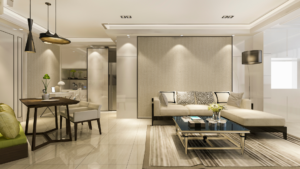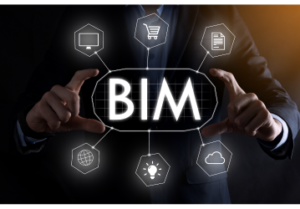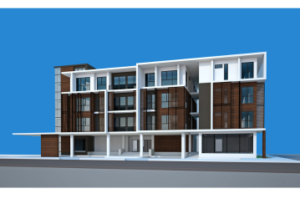In the competitive landscape of the architecture, engineering, and construction (AEC) industry in the USA, staying ahead requires innovation and efficiency. One indispensable tool that has revolutionized architectural projects is 3D rendering services. In the dynamic world of architecture, visualizing designs accurately and effectively is paramount. Traditional 2D drawings and blueprints, while informative, often fall short in conveying the full scope and intricacies of architectural concepts. This is where 3D rendering services step in, offering a transformative solution that bridges the gap between imagination and reality. In this blog post, we’ll delve into why these services are essential for architects, designers, and developers, and how they can elevate the success of AEC projects.

Why 3D Rendering Services Matter:
- Enhanced Visualization: 3D rendering brings architectural designs to life with stunning visual fidelity and realism. By creating lifelike representations of buildings, interiors, and landscapes, architects can communicate their vision more effectively to clients, stakeholders, and project teams.
- Streamlined Design Process: With 3D rendering, architects can iterate and refine designs more efficiently. By visualizing different concepts in 3D space, they can identify potential design flaws, optimize layouts, and make informed decisions early in the design process, saving time and resources in the long run.
- Client Engagement and Approval: High-quality 3D renderings have a powerful impact on clients, helping them visualize the final outcome of their projects with clarity and confidence. By presenting photorealistic renderings, architects can foster better client engagement, gain buy-in, and secure project approvals more effectively.
- Marketing and Promotion: In today’s digital age, compelling visuals are essential for marketing architectural projects. 3D renderings serve as powerful marketing tools, allowing architects and developers to showcase their designs in immersive virtual environments, attract potential buyers or investors, and differentiate themselves in a competitive market.
Key Components of a Photo-Realstic 3d Rendering:
To achieve lifelike renderings, several key components come into play, each contributing to the creation of immersive visual experiences. Here are the essential components of 3D rendering:
- Modeling: The foundation of 3D rendering begins with modeling, where artists create digital representations of objects, environments, and architectural elements using specialized software such as AutoCAD, SketchUp, or Blender. Modeling involves defining the geometry, shape, and structure of the objects in the scene.
- Texturing: Texturing adds surface detail to 3D models, simulating materials such as wood, metal, concrete, or fabric. Texture maps, including diffuse maps, specular maps, and normal maps, are applied to the surfaces of 3D models to mimic real-world materials and enhance visual realism.
- Lighting: Lighting plays a crucial role in 3D rendering, influencing the mood, atmosphere, and perception of a scene. Artists use various types of light sources, such as point lights, spotlights, and ambient lights, to illuminate the environment and create realistic shadows, highlights, and reflections.
- Shading and Materials: Shading refers to the process of calculating how light interacts with surfaces and materials in a 3D scene. Artists utilize shaders to define the appearance of materials, controlling properties such as color, glossiness, transparency, and reflectivity to achieve realistic rendering results.
- Rendering Engine: The rendering engine is the software component responsible for processing 3D scenes and generating the final images. Rendering engines use algorithms to simulate the behavior of light and calculate the color, intensity, and placement of pixels in the rendered image.
- Camera Setup: In 3D rendering, virtual cameras are used to define the perspective and composition of the rendered images. Artists adjust parameters such as focal length, field of view, and camera angle to frame the scene and capture the desired viewpoint.
- Post-Processing: Post-processing techniques are applied to enhance the visual quality of rendered images further. This may include color correction, depth of field effects, lens flares, motion blur, and other visual enhancements to refine the final output.
Types of 3D Rendering:
In the world of 3D rendering, a diverse array of techniques caters to various needs and objectives. Here’s a closer look at some key types:
- Product Rendering: Highlights product features, materials, and branding elements for marketing purposes.
- Interior Rendering: Brings interior spaces to life, aiding in design visualization and planning.
- Exterior Rendering: Captures architectural facades, landscapes, and outdoor environments.
- Walkthroughs: Interactive 3D visualisations that simulate real-time navigation through architectural spaces, providing viewers with a first-person perspective to explore interiors and exteriors.
- Flythroughs: Cinematic animations offering a bird’s-eye view of architectural designs, landscapes, and urban environments, highlighting key features and design elements.
- Landscape Rendering: Visualising outdoor environments, natural landscapes, and site amenities, showcasing terrain, vegetation, and hardscape elements to engage stakeholders in outdoor space planning. Each type serves a distinct purpose, from architectural visualisation to product marketing and beyond.

How 3D Rendering as a tool to maximize ROI: In the competitive world of real estate, captivating potential buyers and investors is paramount for maximizing return on investment (ROI). Enter 3D rendering, a revolutionary tool transforming the landscape of property marketing. 3D rendering offers immersive visualizations that breathe life into properties, from photorealistic architectural exteriors to interactive virtual tours of interior spaces. These visualizations captivate audiences, sparking emotional connections and driving engagement.
One of the key benefits of 3D rendering in real estate marketing is the ability to showcase properties pre-construction. Developers can provide potential buyers with a sneak peek into the future, visualizing architectural plans and design concepts in exquisite detail. This generates excitement and anticipation, attracting early interest and securing pre-sales ahead of construction. Secondly, personalized marketing materials are another advantage of 3D rendering. Marketers can tailor renderings and virtual tours to specific target audiences, addressing their unique preferences and priorities. This customization enhances the appeal of properties, increasing the likelihood of generating leads and closing deals. Futher, 3D rendering accelerates sales cycles by offering comprehensive views of properties through immersive visualizations. Virtual tours and interactive floor plans empower buyers to make informed decisions quickly and confidently, expediting transactions and driving faster sales. Finally, cost-effective marketing is also achievable with 3D rendering, as it eliminates the need for physical staging and expensive photoshoots. Virtual staging and CGI renderings provide versatile and visually impactful marketing materials at a fraction of the cost.
In today’s competitive real estate market, differentiation is crucial. By leveraging 3D rendering technology to create visually stunning and immersive marketing materials, real estate professionals can stand out, capture attention, and drive interest in their properties with sophistication and creativity. Embracing 3D rendering unlocks new possibilities for growth and profitability in real estate marketing.
Final Verdict:
In summary, 3D rendering services play a vital role in the success of architectural projects in the AEC industry. From enhancing visualization and streamlining the design process to engaging clients and boosting marketing efforts, the benefits of 3D rendering are undeniable. By leveraging these services, architects and developers can unlock new opportunities, elevate project outcomes, and thrive in today’s competitive landscape. Contact Allied Architecturals today to learn more about our comprehensive 3D rendering services and take your architectural projects to the next level.




